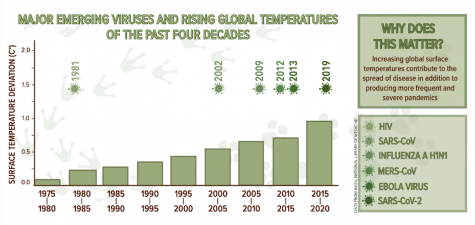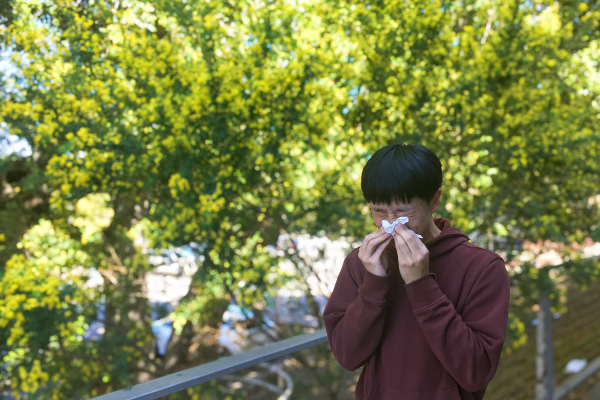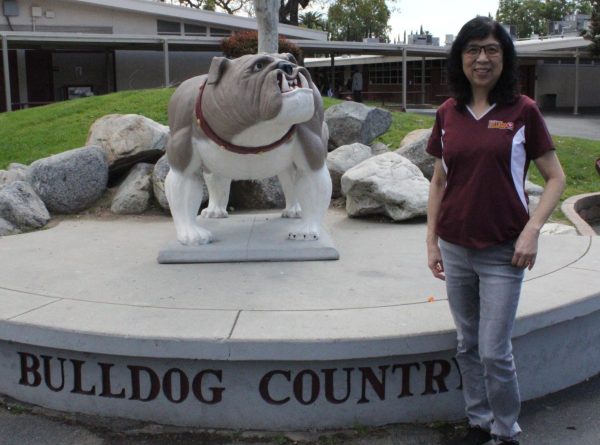Global Reset: How climate change infects our world
Global warming triggers spread of viral diseases
Jessica Wang
An illustration of a virus approaching the Earth. Global warming has led to increased disease spread, with warmer temperatures, greater animal migration and the uncovering of viruses from the permafrost.
December 6, 2022
We’re now living three years after the COVID-19 pandemic, an event that took the lives of 6.6 million and permanently changed our meaning of “normal.” COVID-19 isn’t the first nor the last of deadly viral outbreaks, with the 1968 Influenza A pandemic and the 1981 HIV epidemic producing similar effects. Cases of new emerging viruses are more common now, with a 22-28% chance of the next pandemic of the same severity as COVID-19 taking place within a decade. But what is causing this, and how can we stop it? Despite the perhaps unexpected connection, part of the evidence points to climate change.
The main source of climate change-caused spread of disease is increased cross-species interactions spurred by animal migrations due to the destruction of ecosystems. Through burning, melting, shrinking and more, global warming wears away at animal habitats. The effects are increasing exponentially at unprecedented rates as seen in Greenland, where a currently melting ice sheet will result in a 10.6 inch increase in sea levels, twice the amount initially predicted. Just a foot increase in sea levels swallows up to 100 feet of coastline, displacing thousands of animals. Worse, rising levels threaten one in six endangered species, according to a study by the Center for Biological Diversity.
“Since the real issue is climate change, anything to reduce the change in temperature, which creates these issues for these [animals], is probably a good step to actually treat the specific symptoms of the situation,” Research Club officer Arnav Swaroop (11) said. “To try, you could leave some amount of land like forest land untouched and constrict human urbanization.”
From rising sea levels to wildfires, habitat destruction not only wipes out species but also leaves animals with no place left to go — except towards the poles. Around 50% of all wildlife are migrating in search of cooler climates and new habitats, with some species traveling over 40 miles a decade.
As animals trek across the globe, they come into contact with other species that they wouldn’t have run into under normal circumstances. These cross-animal interactions permit new viruses, called zoonotic diseases, to jump from host to host. Often, these viruses have not been previously encountered by the animal, fostering unprecedented rates of disease transmission. Notably, 75% of recent viral diseases, including COVID-19, originated from animals, and these incidents increase both the frequency and the severity of pandemics, due to expedited transmission.
In addition to animals spreading viruses, permafrost, ground frozen for two years or longer, is melting at rapid rates, releasing new infectious diseases. Although permafrost primarily occupies Arctic regions, these viruses can escape into water supplies as well as piggyback on animals as they migrate. Currently, permafrost temperatures are rising at around 0.6 degrees Fahrenheit each decade. Just a three degree increase in global temperatures can melt up to 85% of permafrost layers.
“These layers of permanently frozen soil thawing have viruses in there [that] the earth hasn’t seen in potentially millions of years,” upper school biology teacher Dr. Matthew Harley said. “Certainly humans haven’t seen them and had any immune system response to them.”
With increased disease transmission comes higher mutation rates, so although global warming doesn’t cause viruses to mutate on the biological level, warmer weather directly links to spread of disease, according to Dr. Harley.
“One of the aspects [of] warmer weather is that people are more likely to be outside and interacting with each other,” Dr. Harley said. “Viruses spread better, obviously, through human contact, [but] when it’s cold, when people are more isolated by themselves or with families, we do often see a lower spread of viruses.”
Although action against climate change is a widespread movement, debates over whether authorities and the general public are doing enough continue. Even though countries have pledged to lower carbon dioxide levels to combat climate change, few have followed through with their promises. Similar to Arnav, Public Health Club officer Young Min (10) appreciates the implemented policies but believes that the issue is only solvable if the public and authorities are more involved in the movement.
“I think [climate change] is solvable if we take it seriously,” Young said. “The government has to be willing to change in order for climate change, [and], as a global population, we [need to] take the initiative to collectively lower our [carbon dioxide] emissions and actually care for our planet.”
Especially in the COVID-19 pandemic, with 42% of adults displaying distrust in vaccines, belief in science has waned. So, in combating climate change, Dr. Harley emphasizes the importance of education in a time when global warming’s effects are increasing unpredictably.
“A lot of people have lost their faith in science and don’t understand how science is done, how much we know from the scientific studies and how believable they really are,” Dr. Harley said. “So educate yourself, help educate others both more generally about science but then about potentially these individual viruses and their diseases. [Most importantly], heed the cautions that scientists and doctors are trying to spread.”

This story was originally published on Harker Aquila on November 16, 2022.































![IN THE SPOTLIGHT: Junior Zalie Mann performs “I Love to Cry at Weddings,” an ensemble piece from the fall musical Sweet Charity, to prospective students during the Fine Arts Showcase on Wednesday, Nov. 8. The showcase is a compilation of performances and demonstrations from each fine arts strand offered at McCallum. This show is put on so that prospective students can see if they are interested in joining an academy or major.
Sweet Charity originally ran the weekends of Sept. 28 and Oct. 8, but made a comeback for the Fine Arts Showcase.
“[Being at the front in the spotlight] is my favorite part of the whole dance, so I was super happy to be on stage performing and smiling at the audience,” Mann said.
Mann performed in both the musical theatre performance and dance excerpt “Ethereal,” a contemporary piece choreographed by the new dance director Terrance Carson, in the showcase. With also being a dance ambassador, Mann got to talk about what MAC dance is, her experience and answer any questions the aspiring arts majors and their parents may have.
Caption by Maya Tackett.](https://bestofsno.com/wp-content/uploads/2024/02/53321803427_47cd17fe70_o-1-1200x800.jpg)
![SPREADING THE JOY: Sophomore Chim Becker poses with sophomores Cozbi Sims and Lou Davidson while manning a table at the Hispanic Heritage treat day during lunch of Sept 28. Becker is a part of the students of color alliance, who put together the activity to raise money for their club.
“It [the stand] was really fun because McCallum has a lot of latino kids,” Becker said. “And I think it was nice that I could share the stuff that I usually just have at home with people who have never tried it before.”
Becker recognizes the importance of celebrating Hispanic heritage at Mac.
“I think its important to celebrate,” Becker said. “Because our culture is awesome and super cool, and everybody should be able to learn about other cultures of the world.”
Caption by JoJo Barnard.](https://bestofsno.com/wp-content/uploads/2024/01/53221601352_4127a81c41_o-1200x675.jpg)














